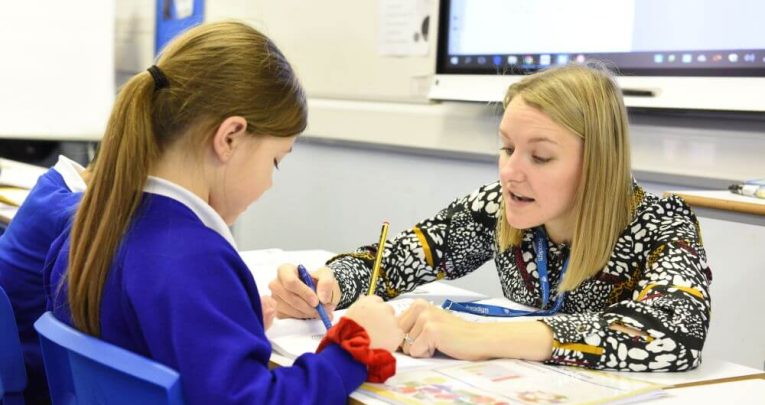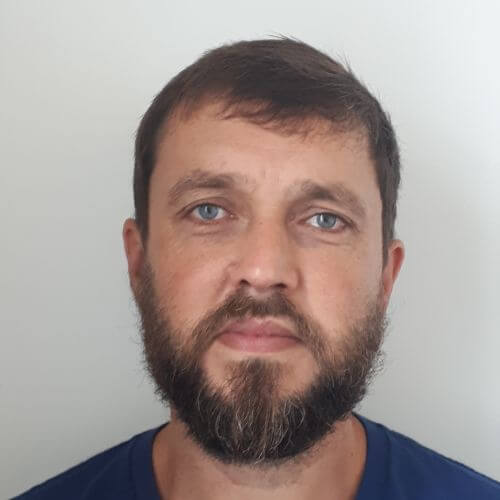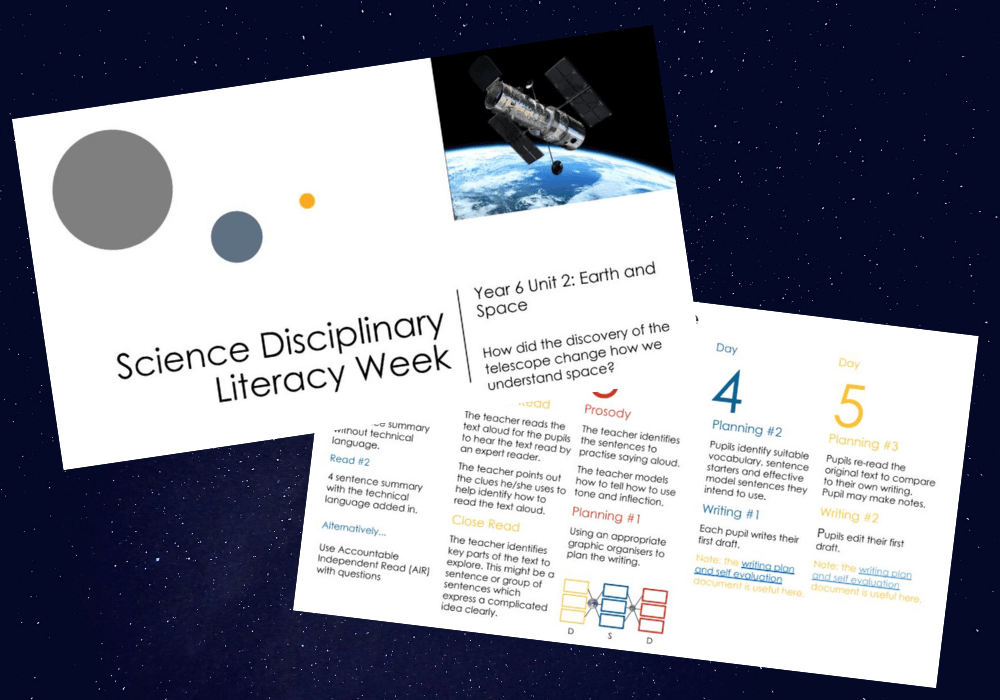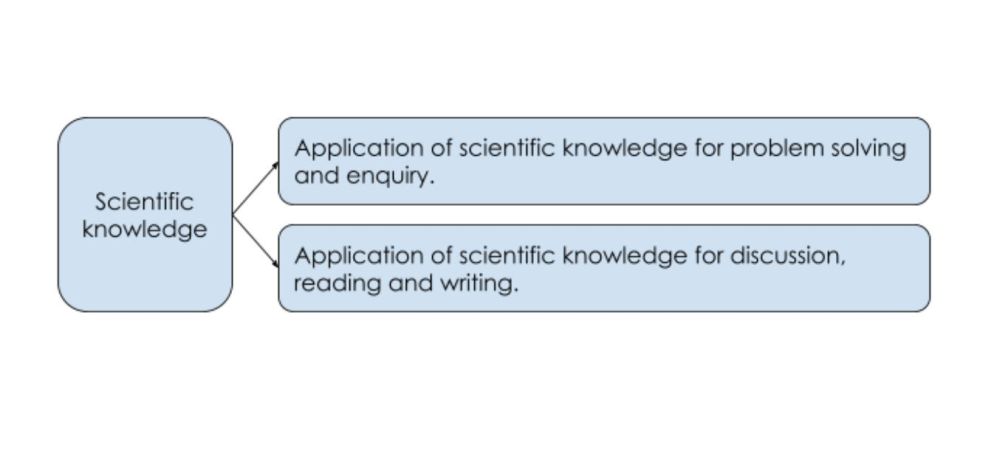Primary science – How and why Paradigm Trust overhauled its science curriculum

We’ve made our teaching more relevant to pupils, says Ben Rogers, director of curriculum and pedagogy at Paradigm Trust…

- by Ben Rogers
- Director of curriculum and pedagogy at Paradigm Trust Visit website

In 2020, the Wellcome Trust found that around half of students in Y7 and 8 felt unprepared for science at secondary school.
This can’t be right. What has caused it and what, as primary teachers, can we do about it?
In 2013, after 18 years as a secondary physics teacher, I switched to primary. I found (and still find) the skills of primary teachers astonishing. Every teacher has to be a specialist in every subject.
And each subject is different, not just in content, but also in pedagogy. We don’t teach maths like we teach phonics. Music, DT, history and science are all taught differently.
But when I began to observe primary colleagues teaching science, I found something surprising: not only is primary science taught differently to every other subject, it’s also taught differently to secondary science. You wouldn’t think it’s the same subject.
Secondary science teachers typically teach from the front of the class. Theirs is a much more instructional approach. The teacher breaks down a concept into small pieces, teaching, practising and checking at each stage.
In primary science, it’s much more common for teachers to adopt an enquiry pedagogy where they hold back on explaining certain key ideas and instead set up a task where pupils work out knowledge for themselves. This sounds great, but does it work? The evidence suggests not.
I don’t think we prioritise scientific knowledge enough at primary school. If you look at published resources and training for primary science, the emphasis is on enquiry teaching.
This encourages teachers to set a challenge for pupils – an activity for them to complete – where children are expected to discover scientific concepts independently. It sounds brilliant, except it’s incredibly hard.
Only the lucky few will be able to make this inference, leaving many behind. They may have enjoyed the lesson, but they won’t have learnt the science.
Tiny steps
Imagine a Y5 forces lesson. The teacher wants her pupils to learn about air resistance so she sets up an activity where pupils are making parachutes with different areas of sail. She’s hoping that children will make the connection between a larger parachute and greater air resistance.
The pupils drop their parachutes from a stage onto the floor and time them. This is difficult: they need to coordinate dropping the parachute with starting a stopwatch then stopping it again the moment the parachute hits the ground.
If you’ve tried this yourself, you’ll realise it’s quite tricky, especially as the parachutes get smaller.
The pupils may not observe the parachutes don’t open fully each time. They may not notice the draft blowing the parachute sideways, or that they started the stopwatch too early, so the data may not be adequate.
Then, probably near the end of the lesson, children are asked to interpret the data. The teacher is hoping pupils can infer that a slower descent must mean the air resistance is greater. That isn’t obvious, even if the results are reliable and accurate, as they’re measuring time, not air resistance.
We are then inferring that when the time is longer the speed must be less. Finally, pupils have to infer that something must be causing the reduced speed – air resistance.
Without teachers breaking down complex learning into small elements first, it’s incredibly difficult for children to know what to look for during an activity like this, and what to do with it when (or if) they do find it. It’s far better to put activities to one side until pupils have the knowledge to make the most of them.
“But that’s not interesting for the children: it’s not fun!” comes the objection, yet that’s exactly the way other subjects are taught. We don’t teach reading by handing a copy of the latest Mick Inkpen picturebook to a child in nursery and seeing what words they manage to recognise.
Instead, we take tiny steps, ensuring they can recognise the sounds different letters represent, before moving on to sounding out whole words. Once that’s mastered they are ready for sentences and more challenging books. It’s the same in maths.
We know it works, yet for some reason science is seen as a special case. Until this is addressed, children are going to continue to be unprepared for the transition to secondary school.
Specialist knowledge
Another reason why I suspect pupils feel unprepared for secondary science is a lack of curriculum time. In England, primary science typically gets less than half the curriculum time compared to secondary.
This may be because there is a much higher commitment of curriculum time to maths and literacy in primary school. I don’t have a problem with this. Pupils with good literacy and maths skills do better at science later on – it’s an investment.
But with literacy and science, it doesn’t have to be either/or. With careful planning it’s possible to broaden and deepen science knowledge through literacy activities.
Another issue around science in primary schools is teachers’ lack of specialist science knowledge. Only 40% of science leads in primary have an A-level in the subject, and the ratio drops further when it comes to higher-level qualifications.
The two days spent on science during teacher training isn’t enough to fill the gaps. This leads to primary science teachers often relying on published resources which are activity driven, because they’re not confident enough to teach science more directly.
These are just some of the challenges we face when trying to raise the standards of primary science and preparing our pupils better for progression in secondary school.
But they’re by no means insurmountable, and at Paradigm we are now at a stage where it’s evident that our primary pupils have all the tools they need to learn – and enjoy – secondary science.
Bridging the gap
Paradigm Trust’s focus on bridging the science gap began in 2017. At the start of the autumn term we put together a team to address it, with one colleague drawn from each of our schools.
From there we laid out the aims of our curriculum – science factual knowledge, science skills and scientific disciplinary literacy (scientific discussion, reading and writing) – and created a knowledge sequence document.

Once we had this foundation established we moved on to designing how we would assess both subject knowledge and science writing. Over the course of the spring and summer terms we developed a long-term plan and began work on medium-term plans for autumn.
The next year we began teaching the scheme and assessed learning using multiple choice questions. After the autumn term we gathered feedback and evaluated how well the first term’s resources had worked. Using this knowledge to guide us, we were then able to complete the remaining medium-term plans in the spring term.
It was also at this point that we introduced a science and writing assessment. In the summer we gathered feedback again and evaluated how the whole year had gone so we could improve what we would be doing in 2018/2019.
At Paradigm Trust, for one week each half term we replace our English lessons with ‘disciplinary literacy’ lessons. We teach scientific English and read, discuss and write about the science we’ve been learning. These lessons have a strong focus on how scientists communicate.
The content is built around topics children have learnt, so they are rehearsing their understanding and developing it further. Each week is finished with a writing outcome.
How we set out our disciplinary literacy lessons
How does scientific writing differ from other forms of writing? Scientific sentences tend to be shorter, with fewer literary flourishes. Nouns take centre stage: we even turn verbs into nouns (classification, neutralisation, adaptation). We like concise, clear precision.
This can make it challenging for pupils to read, and even harder for them to write. Yet as pupils move through school and beyond, they are expected to learn more and more scientific knowledge through reading. The image of a scientist in a laboratory ought to be the scientist in a library. At Paradigm, we start teaching our pupils how to read, write and talk like a scientist from early in their science careers. Each half term, we take an appropriate science text and build a week of lessons about it. We use the techniques our pupils are familiar with and adapt them to the text. Here’s how the week pans out:
Day 1: This is a recap of the relevant scientific knowledge required by the text, followed by a four bullet-point summary of the text.
Day 2: We do the first full read. The teacher reads the text aloud to pupils and explores interesting phrases and use of language.
Day 3: Today is all about discussion and prosody. We use techniques from Reading Reconsidered (Lemov, Driggs and Woolway) and teach pupils how to read the text aloud – where to put the emphasis, when to pause. We also teach the phrases of discussion and scientific argument.
Days 4 & 5: We plan a new piece of writing. The key is to make the new text as close as possible to the text we’ve been studying. If the original text was about daffodil pollination, we might choose to write a text about tulip pollination. If the original text was about erosion of limestone, we might write about the erosion of sandstone. The idea is for pupils to apply the knowledge about scientific writing they’ve just learnt. On the final day, pupils write their texts.
Download an example resource here.
Our next major improvement to how we teach science was in autumn 2020 when we began subject knowledge enhancement sessions. Each half term we have a 30-minute online training session for teachers in each year group to get together and review key learning, common misconceptions and expert advice for the coming unit.
It’s an opportunity to ensure every teacher understands and feels confident teaching science concepts.
We’ve found over time that we can stretch teachers further, developing their scientific knowledge and widening their background knowledge via relevant science stories, a wider range of demonstrations and practical work and examples of high-quality learning outcomes.
Representative curriculum
By the time children enter Y7, there’s a good chance they’ve already decided whether science might or might not be for them. Research shows that many primary pupils rule out science as a future career, even if they are good at it.
Why? Because over their primary career they’ve seen over and over again that scientists are white, middle-aged, middle-class men. If a child comes from a different background, as the majority do, it takes a strong will to see that and think, “I’m going to be a scientist anyway”.
To address the issue of representation in science, we designed our curriculum to reflect our pupils’ backgrounds, ensuring they see themselves in it.
We have built it so there’s representation from Arabic cultures around astrology and the history of medicine, and positively discriminated by adding narratives to make teaching more relevant to our pupils.
It’s part of a project we’re currently working on with the University of Northumbria called NUSTEM, which focuses on ‘usualisation’ of diverse role models.
This is designed to encourage primary children to consider science careers, and it builds a short career selection into every lesson, so our teachers have access to resources featuring a diverse selection of role models.
Now that we’ve embedded a culture of scientific knowledge in our primary schools and put in place the correct resources, we’ve started to take the next step – increasing the quantity of enquiry activities.
We feel that our pupils now have a sufficiently strong understanding of scientific concepts to be able to apply them in their own experiments. These lessons are still heavily guided by the teacher, but more independence is granted to pupils. If this is successful, we’ll continue to develop it.
Pupils are now leaving our primary schools with a strong foundation of scientific knowledge to build on. They can confidentially discuss scientific issues and read and write the kinds of text they’ll experience in high school science lessons.
They are familiar with how science is taught and have seen people like themselves enjoying rich and fulfilling careers in the sciences.
They are ready for secondary.
Ben Rogers is director of curriculum and pedagogy at Paradigm Trust. He is also a Chartered Science teacher, a member of the Institute of Physics’ Education Committee, on the editorial board for the Association for Science Education’s Primary Science journal and a member of Ofsted’s science advisory group. Follow Ben on Twitter at @benrogersedu. Follow Paradigm Trust at @paradigmtrust. Visit Ben’s website at readingforlearning.org.







